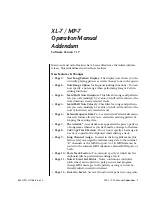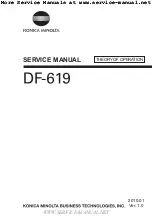
Using a flow cell
C A U T I O N
Do not use a flow cell with flammable samples or those that contain
hydrocarbons, solvents, concentrated acids or concentrated bases that may
damage wetted parts of the cells. Conduct tests before use of flow cells if sample
compatibility is not known.
Note: Do not use a high pressure flow cell kit with this instrument.
Use a flow cell to increase the speed, accuracy and reproducibility of
measurement. The manufacturer especially recommends using a flow
cell for low turbidity measurements.
Install a flow cell
1.
Fully clean and assemble the flow cell, tubing and stand. Refer to
on page 28 and the user instructions
provided with the flow cell.
2.
Fill the flow cell and tubing with water and make sure that there are
no leaks or air bubbles.
Note: Air bubbles collect in areas that are not cleaned fully.
3.
Clean the exterior surface of the flow cell with a soft, lint-free cloth to
remove water spots and fingerprints.
4.
Apply a small bead of silicone oil from the top to the bottom of the
flow cell.
Note: Use only the provided silicone oil. This silicone oil has the same
refractive index as the flow cell glass and masks minor glass scratches.
5.
Use the oiling cloth provided to apply the oil equally to the surface of
the flow cell. Remove the excess oil. Make sure that the flow cell is
almost dry.
Note: Put the oiling cloth in a plastic storage bag to keep the cloth clean.
6.
Install the flow cell in the sample cell compartment.
7.
Push the inlet and outlet tubes in the slots on the top of the
instrument enclosure so the sample cell cover can be installed. Refer
to the user instructions.
8.
Put the flow-cell light cover over the flow cell.
Note: The standard sample cell cover of the instrument does not close when
the flow cell is installed.
Clean a flow cell assembly
1.
Disassemble the flow cell assembly.
2.
Clean the inside and outside of the glass parts with a laboratory
glass cleaning detergent. Follow with multiple rinses with distilled or
demineralized water.
Note: All tubing, flow cells, and caps in the flow cell assembly can also be
steam sterilized.
3.
If measuring low turbidity samples, clean the inside and outside of
the glass parts with 1:1 hydrochloric acid and rinse multiple times
with dilution water.
4.
Fill the sample cell with distilled or demineralized water and
immediately put the caps on the sample cell.
5.
Clean the inside and outside of the plastic parts and tubing with
laboratory detergent and warm water.
Note: At intervals, replace the tubing as contaminants, including
microbiological growths, are difficult to remove from the inside surface of the
tubing.
6.
Air dry the parts after cleaning.
Flow cell maintenance
• Keep all parts of the flow cell assembly clean.
• At intervals, replace all the tubing to make sure that the system is
clean. Keep the tubing as short as possible to minimize air locking and
lag time of sample flow. Locate the instrument as close to the drain as
possible.
Flow cell operation
• Do not use the flow cell for samples that contain large particles that
may collect and stop the sample from flowing.
• Slowly put the sample down the interior edge of the inlet reservoir to
prevent mixing of the sample, which can cause air bubbles. Air
bubbles create a false positive interference in a turbidity
measurement.
• If bubbles collect in the flow cell, gently tap the flow cell on a soft
surface to remove the bubbles. If bubbles continue to collect in the
28
English
Содержание 2100N
Страница 1: ...DOC022 52 80203 2100N 08 2014 Edition 5 User Manual ...
Страница 2: ......
Страница 6: ...Table of Contents 4 ...
Страница 39: ...1 English 37 ...
Страница 44: ...42 English ...
Страница 45: ......
















































